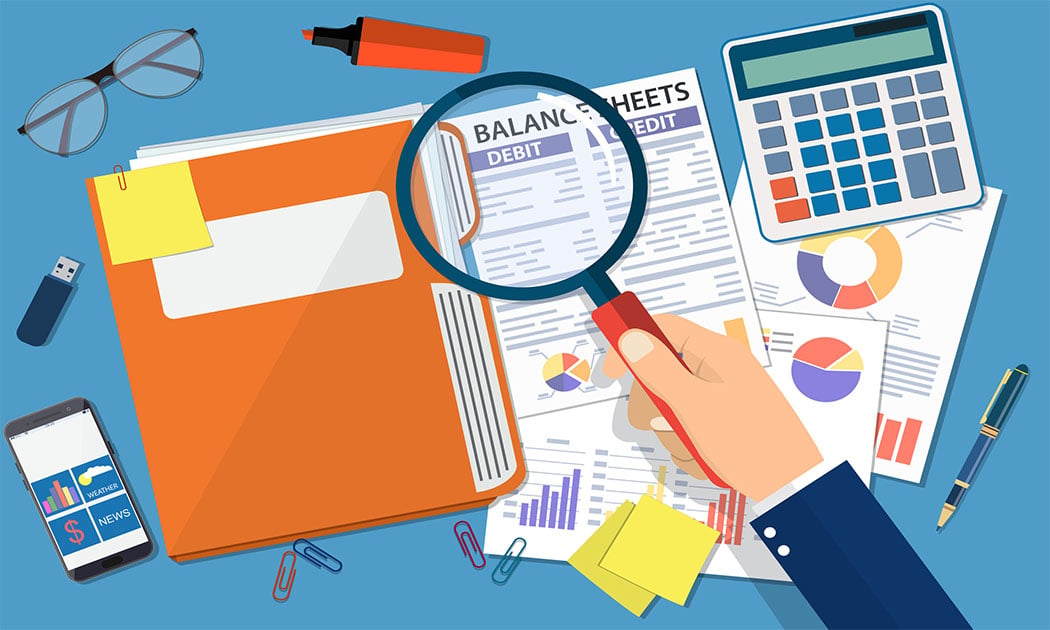The Payroll Blog
News, tips, and advice for small business owners
- Home
- Resources
- Payroll Blog
- 5 Effective Small Business Cash Flow Management Tips
5 Effective Small Business Cash Flow Management Tips
When it comes to the viability of your small business, there’s perhaps nothing more important than cash flow. In fact, according to a U.S. Bank Study, 82% of business failures are due to poor cash flow management.

Even if your business is profitable, unfavorable payment terms or uncollected balances from customers can wreak financial havoc that makes it difficult, if not impossible, to stay afloat.
Keep reading for strategies you can implement to boost cash flow and avoid a crisis moving forward.
1. Get Organized
Staying both organized and diligent when it comes to the funds coming in and out of your business is crucial to your success. To stay on top of your cash situation, it’s essential to use accounting software that tracks the myriad of inflows (sales and accounts receivables) and outflows (salaries, accounts payable, monthly expenses like rent and electricity) involved in your business. You also want to make sure you’re sticking to your budget, and performing cash flow forecasts regularly — ideally monthly, or at the very least, quarterly. This can help you start to detect patterns in ebbs and flows in your cash flow, and even plan ahead for potential impending cash shortages.
2. Identify Money Leaks
Does it sometimes feel as though money is disappearing into thin air? If this is the case, you may have money leaks. Money leaks can take different forms, and some are easier to pinpoint and address while others may take further investigation (like workplace crime and people problems).
First, examine your financial records. Regularly auditing your expenses can help you figure out any costs that can be eliminated, or at the very least, scaled back. Are you still paying for a service that you no longer use, like a landline or a magazine subscription? Be especially mindful of subscriptions that automatically renew. How much are you spending on office supplies? Notepads and mailers may be a necessary part of business, but perhaps there’s an opportunity to buy in bulk at a discount. And while bonding activities are undoubtedly important for employee morale, reducing company-sponsored lunches to one day a week versus three days a week could make a pretty hefty difference in your cash flow.
You also want to make sure you’re evaluating the ROI (return on investment) of initiatives you’re putting money towards, especially when it comes to marketing. If you’re spending part of your budget on Facebook ads that aren’t converting, you’re essentially throwing cash down the drain. Experiment with different channels to see which is most effective in reaching your customer base, and consider running tests that are small in scale, before investing funds towards something that doesn’t work.
3. Renegotiate Payment Terms and Make It Easier to Get Paid
Payment terms are often a main culprit for cash flow crunches. If you aren’t getting paid for 30, 60, 90 or even 120 days after your work is completed, it can be difficult to keep up with your bills. While in an ideal situation you would receive payment from your clients immediately, or at the very least, before you have to pay your suppliers, this isn’t always feasible. Luckily, there are a few small adjustments you can make that could do wonders for your cash flow.
Revisit Agreements with Customers and Vendors
Consider cutting your payment window for customers. If you typically allow customers 45 days to make good on their invoice, consider minimizing it to 15 days. Reducing the window of time that customers have to pay can help put you in a better cash flow situation moving forward. Just remember to give sufficient warning, rather than changing terms on the fly.
Negotiate terms with your vendors to see if they would be willing to extend payment terms. On the flipside, extending payment terms with your vendors can provide you with more of a cushion to increase the odds you’re getting paid by your customers before you have to pay your vendors. Even pushing your accounts receivable from 15 days to 30 days could make a big difference for your bottom line.
Make it Easier to Get Paid
Incentivize customers who pay early.
Offer discounts for customers who make payments before their due dates. Also, make sure you have an established late payment policy to decrease lingering unpaid invoices.
Make it easy for your customers to pay you.
If you’ve been relying on snail mail, it may be time to get acquainted with the cloud. Setting up an online payment system will make it easier for clients to pay you in just a few clicks.
4. Review Your Pricing Structure
It’s best practice to periodically evaluate your pricing. If your expenses have risen since the previous year, have you modified your prices to cover the increase? When calculating your pricing, are you accounting for extra costs like taxes and credit card fees? If you run a service-based business, are you keeping track of your hours, including the time you spend on calls or research?
It can be beneficial to work your way backwards, and figure out exactly how much money you need coming in to be cash flow positive. Based on this, as well as your average monthly sales, you can adjust your pricing (within reason) to ensure you’re meeting your baseline.
5. Consider Restructuring Your Existing Debt or Financing to Fill the Gap
If you find yourself completely strapped for funds, financing could be the answer to your cash flow woes.
There are numerous options available designed to meet a variety of purposes. Maybe you identify a growth opportunity that could take your business to the next level, but you don’t want to put a strain on your cash reserves. In this situation, you might look to a term loan. Or, maybe you have an invoice for which you’re waiting on payment for, but you need the cash now. In this scenario, you might opt for invoice financing.
If you already have existing business debt, you might consider restructuring. You could refinance your short-term debt with a longer-term loan with lower payments, which could improve your current cash flow situation. Or, you could consolidate business debt by rolling some (or all) of your existing debt under one new loan, which could make repayment more manageable. And if you’re consolidating high-interest forms of debt, you might also be able to score a lower interest rate and save your business money.
Conclusion
As a business owner, you know cash flow is king. And with diligence and the proper processes in place, you can set yourself up for success.
About the Author: Samantha is a content marketing writer covering business and finance for Funding Circle.
Related Blog Posts
View Our Plans and Pricing
Small Business Is Our Business.
This website contains articles posted for informational and educational value. SurePayroll is not responsible for information contained within any of these materials. Any opinions expressed within materials are not necessarily the opinion of, or supported by, SurePayroll. The information in these materials should not be considered legal or accounting advice, and it should not substitute for legal, accounting, and other professional advice where the facts and circumstances warrant. If you require legal or accounting advice or need other professional assistance, you should always consult your licensed attorney, accountant or other tax professional to discuss your particular facts, circumstances and business needs.



